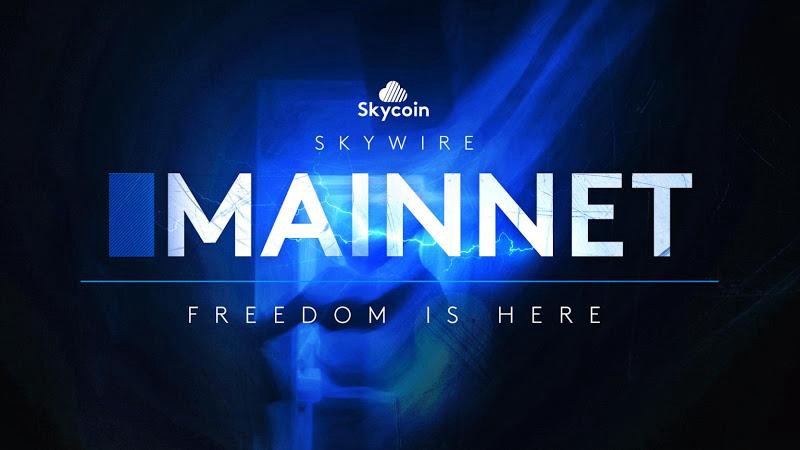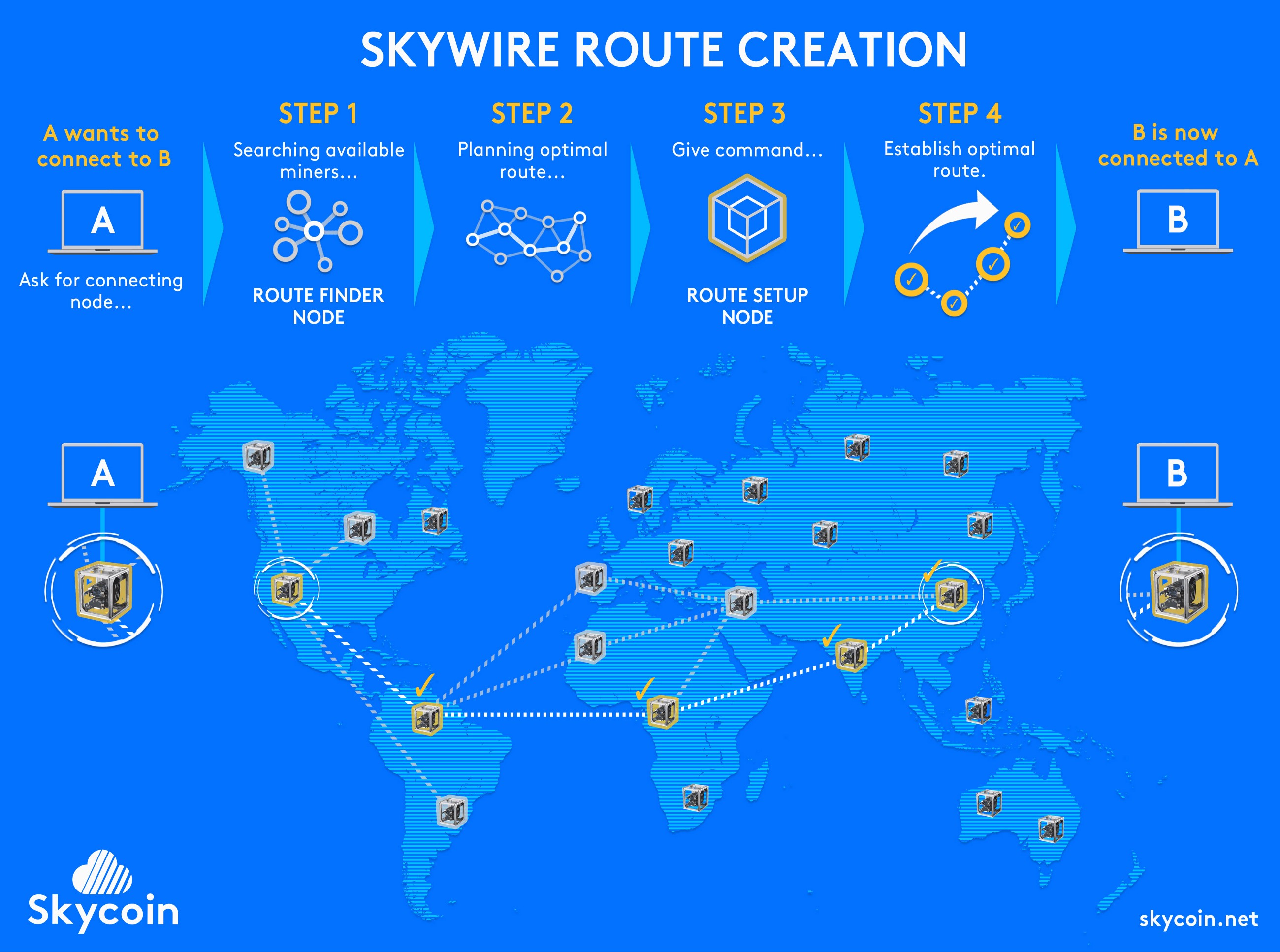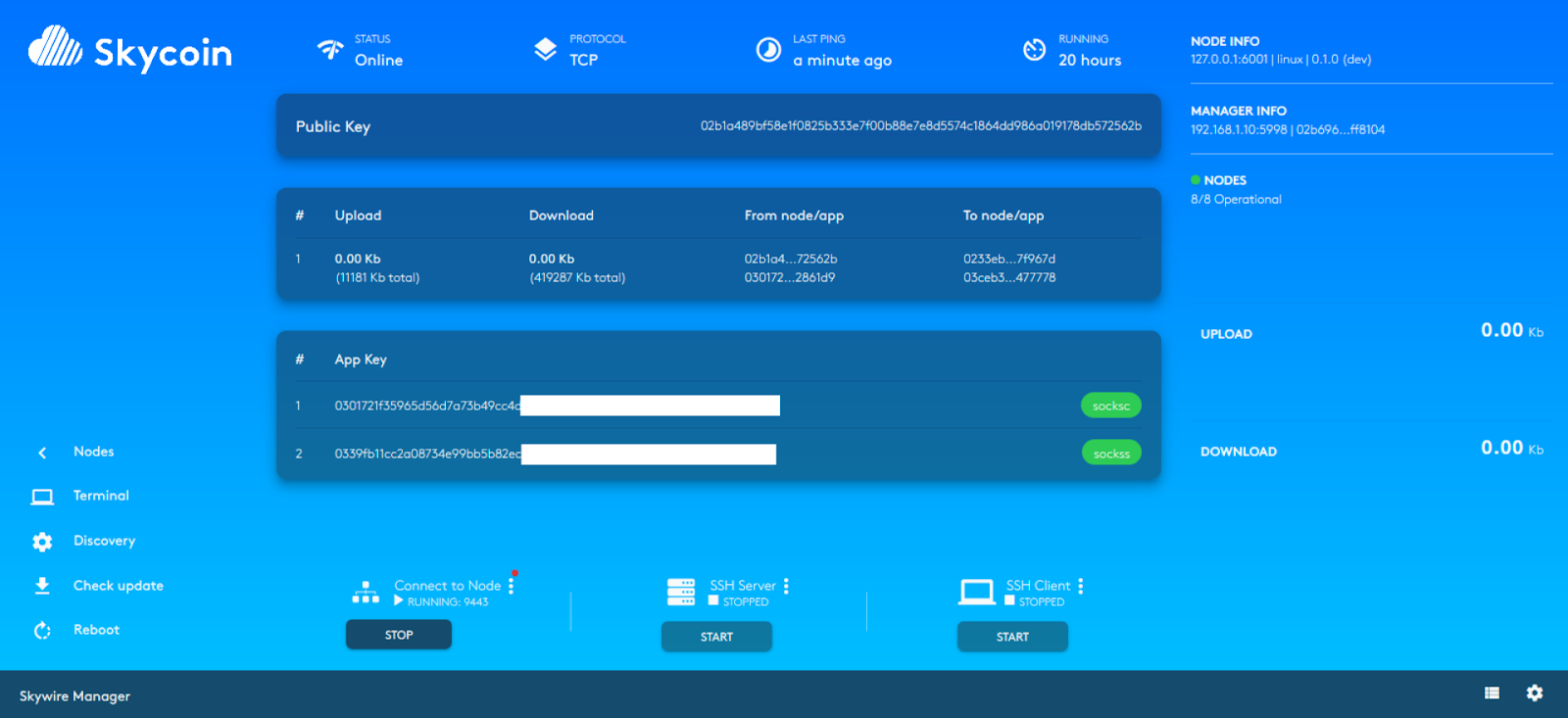 Back to list
Back to list

Inside The Skywire Mainnet
The New Internet Is Here
After years of development and about ten months of intensive testing on a network of nearly 10,000 nodes spanning the globe, we are happy to announce that the first version of Skywire’s mainnet is now live!
What is Skywire?
Skywire is a decentralized, net-neutral, community-driven mesh internet that is fast and resistant to censorship.
Today’s internet is run, or rather suppressed by an oligopolistic market. Large internet service providers (ISPs) harvest personal information, censor websites, give preferential speeds to certain websites, throttle bandwidth and face very few competitors. This means high bills for you and slow speed.
Skywire is our answer to this worldwide problem. A scalable peer-to-peer mesh network delivering secure, uncensored, and lightning fast internet access. It consists of a software defined networking protocol (SDN), a blockchain based payment protocol, and a physical mesh network of hardware nodes known as Skyminers. Skywire is comprised of Skyminers, custom-built hardware that provides the infrastructure and bandwidth to support the network. With this technology, individuals can now act as their own ISPs and get paid for their bandwidth and computational storage contributions.
What Can You Do With Skywire?
Skywire will feature a rich application ecosystem. All kinds of services you know and enjoy over the internet today like social networks, cloud storage, entertainment, and business services will be delivered via Skywire. The network is built for the future with network convergence in mind, it’s designed to handle the high bandwidth and quality of service requirements of emerging technologies. This first iteration of Skywire’s mainnet is primarily for developers to start building the next generation of distributed apps.
Developers can download, install, build, and run the Skywire Mainnet using a command line interface. A graphical user interface (GUI) for Skywire is already in the works as well.
Software Defined Networking(SDN)
If you’re reading this then you’re connected to the internet, and that internet connection is likely running on a TCP/IP network, roughly the same exact routing protocol that has been in place for the past 30 years.
Think of the outdated TCP/IP internet routing protocol like UBER except there is no map pinpointing where you are or where the driver is, instead you get an address and that’s where your trip begins. Your driver doesn’t know the exact route, instead he has to make many stops along the way as he gets sent from point to point with partial directions until you get to your destination. Now think of SDN internet routing as the normal UBER with a visual path to the destination adjusted in real-time based on traffic. It’s faster and cheaper too.
Why are we comparing this internet to UBER? Because that’s another thing that makes Skywire appealing. Just like anyone can apply to be an UBER driver and get paid to get people from point A to point B, anyone can also be an internet service provider with Skywire and get paid to support the network.
Today’s Internet
Today, internet networks are limited by an outdated packet forwarding protocol that has been in use for the past 30+ years due to the money already invested by large companies and governments as well as the difficulties involved in the replacement of this technology.

The New Internet: Skywire
Skywire is an internet SDN protocol. SDN, simply put, pulls the network topology intelligence away from hardware and centralizes in into a software controller for the whole network. If you were looking for something online on this connection, the software controller would instantly know the fastest routing path to your destination. On the internet, you need to make 20 decisions in 20 places about how to get to a node. In Skywire, one place makes one decision and the 20 different nodes merely execute the request. Because the Skywire controller holds all of the network topology info, heavy-duty networking equipment becomes obsolete, paving the way for simple and cheap hardware that individuals can run from their own homes.

Skywire’s Payment Protocol and the Skycoin Blockchain
Bandwidth and data on Skywire is paid for in Coin Hours, which is Skycoin’s parallel currency. One Coin Hour is generated for every hour a Skycoin is held. Skycoin’s consensus relies on CXO, Skycoin’s robust storage system. Anyone running a Skywire node (a Skyminer) can also run CXO and act as a consensus node for Skycoin which is extremely cheap, costing a few cents per month.
Skycoin’s consensus algorithm has no block-creation reward. People will run CXO and act as consensus nodes for Skycoin because it benefits them. It enables them to get paid for providing bandwidth and storage to Skywire. Centralization and artificial transaction inflations from miner pools are inevitable in reward-driven consensus models. Since there is no transaction cost on the Skycoin platform, all of the loopholes to gaming the system for profit are negated. Skycoin and Skywire work together to deliver uncensorable peer-to-peer transactions and communication.
What’s Next for the Mainnet?
The mainnet will be deployed in stages as the various components are implemented, tested and integrated. V1 continues to run over the internet, with proxy functionality. In the near future we’ll release a new and intuitive UI for developers and users to easily interact with the mainnet. The UI will allow you to manage an infinite amount of nodes remotely. This will be followed by the Coin Hour Bank and a full bandwidth-sharing marketplace.
This first version of Skywire’s mainnet represents a huge milestone for Skycoin and for the future of the internet. Skywire will serve as a mainstay, highly resilient network, countering the threats of global censorship. Stay tuned for additional information, technical details, and frequent updates from the team.
To purchase a Skyminer and be your own ISP while earning rewards, visit our website at https://www.skycoin.com.

 Telegram
Telegram